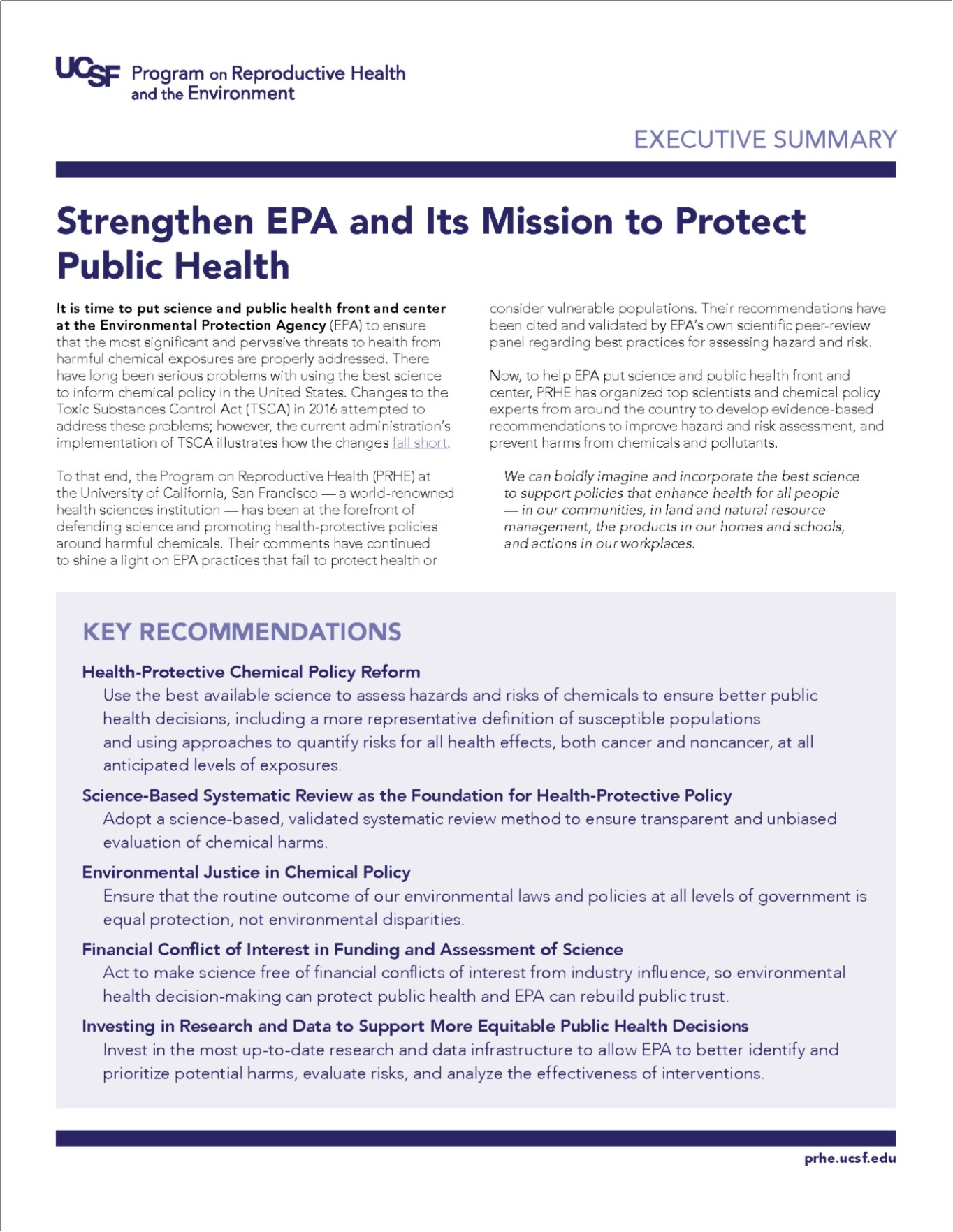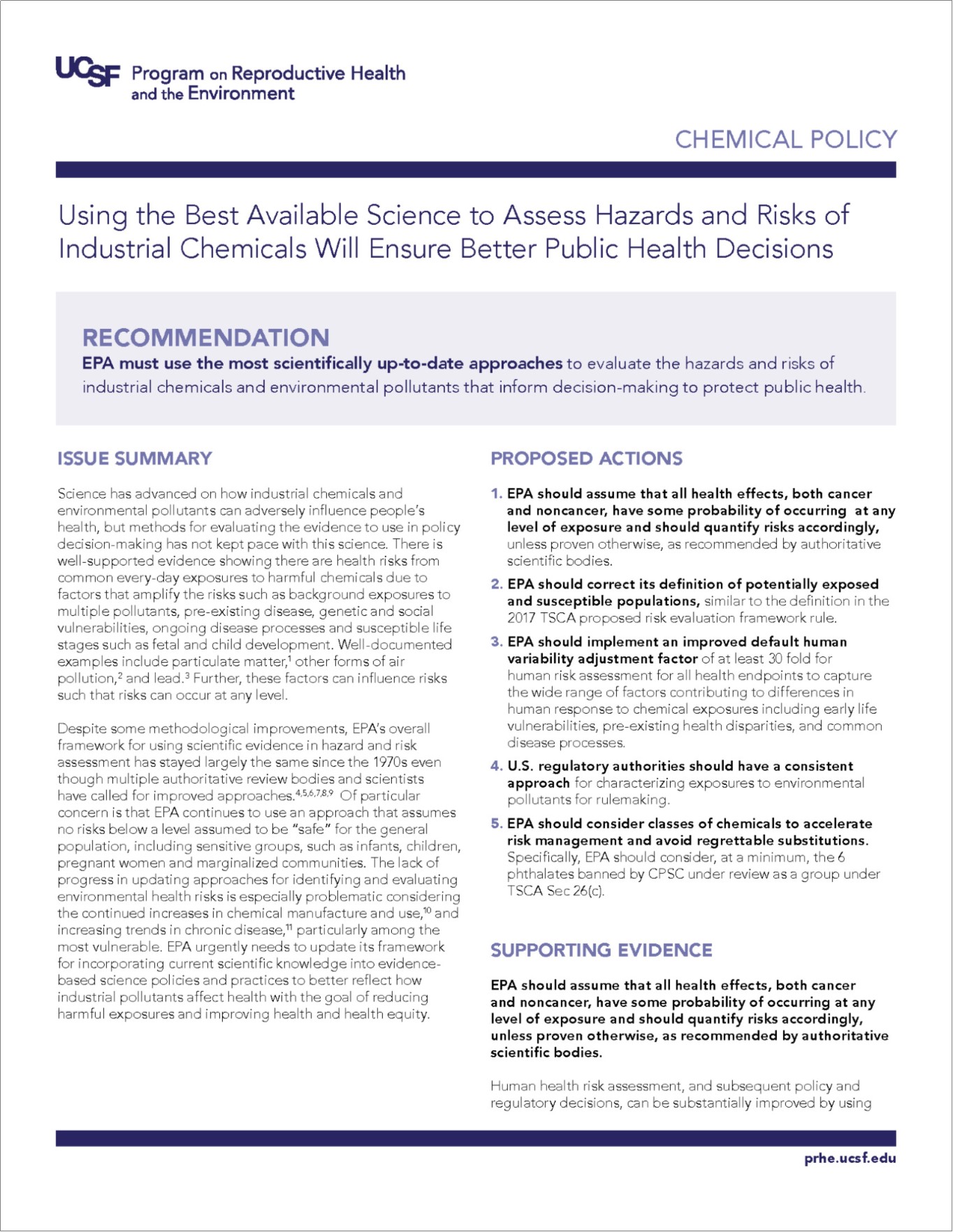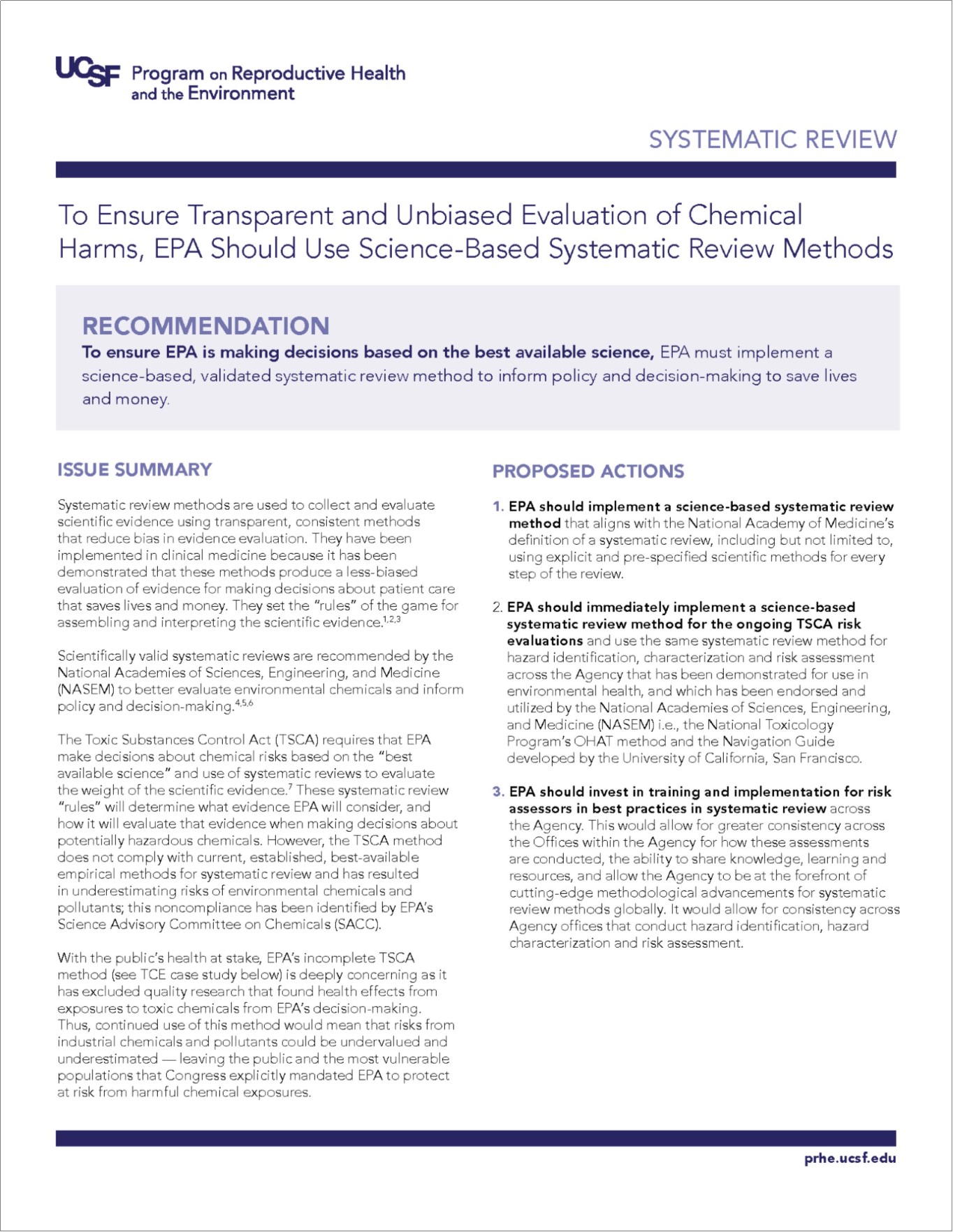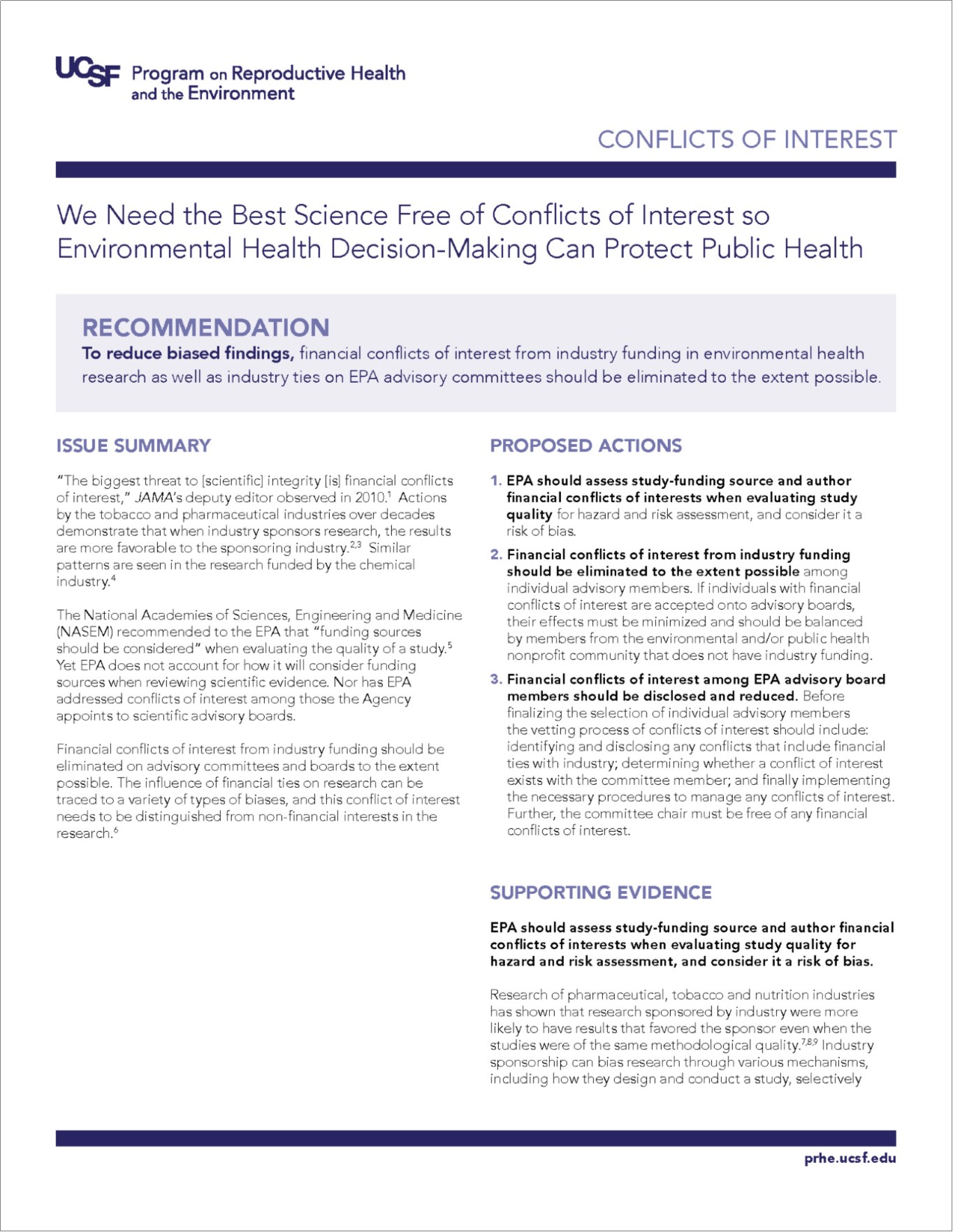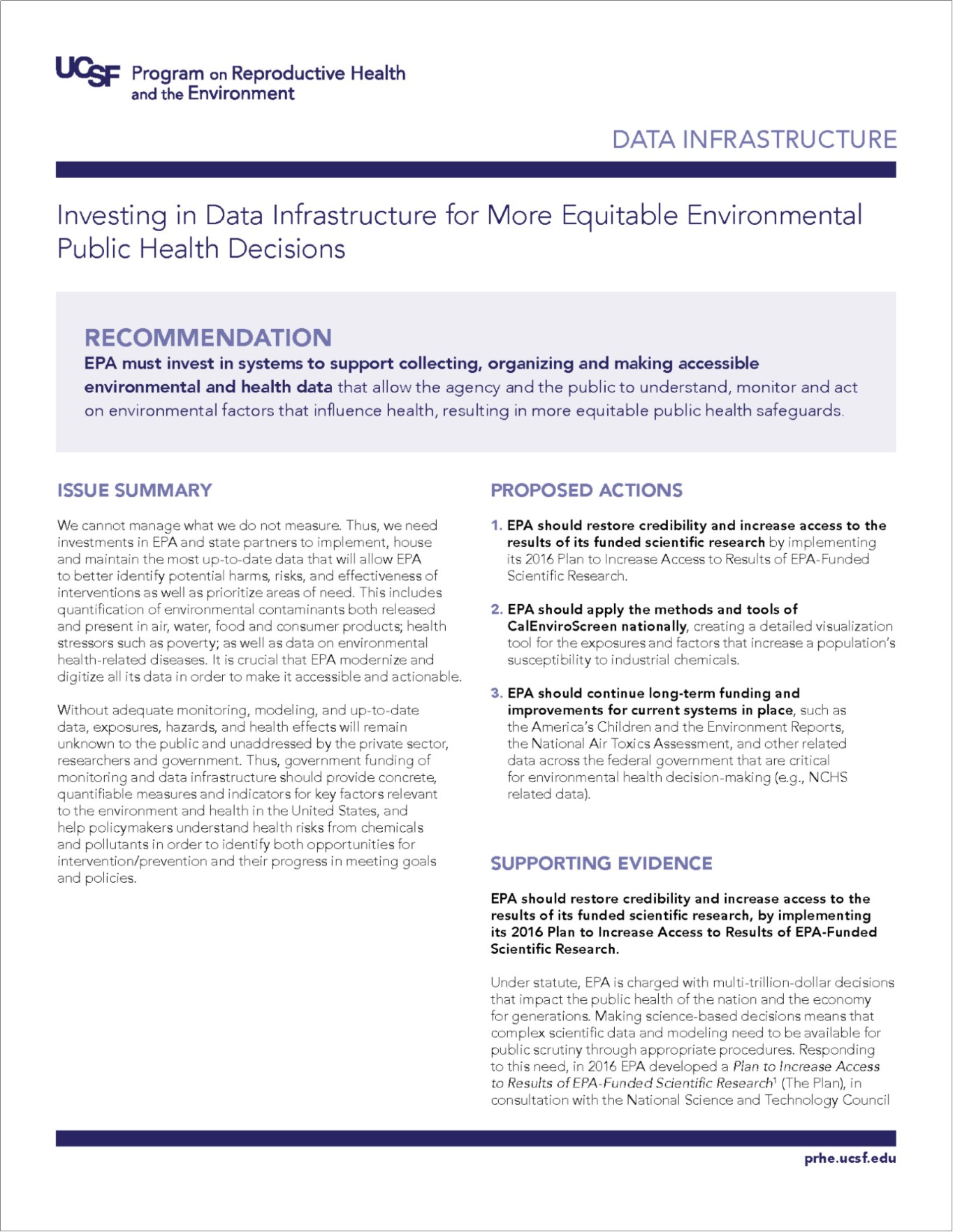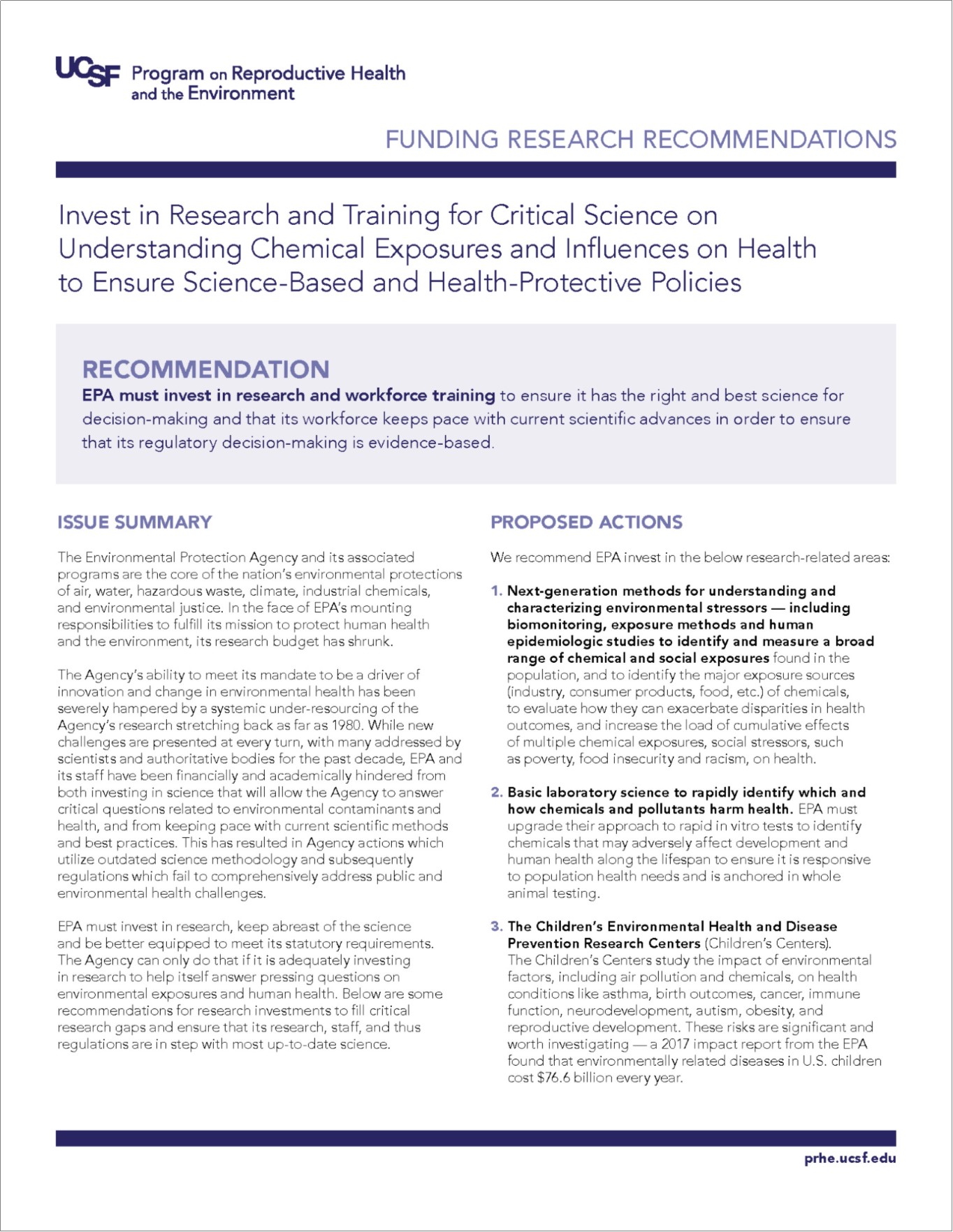Recommendations to Strengthen EPA and its Mission to Protect Public Health
To help EPA put science and public health front and center, PRHE collaborated with top scientists and chemical policy experts from around the country to develop evidence-based recommendations to improve hazard and risk assessment, and prevent harms from chemicals and pollutants.
Below are a set of recommendations to strengthen EPA and its mission to protect public health in six critical areas.

